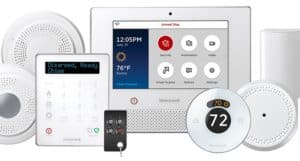Tag Archives: DIY Home Security
Honeywell Lyric DIY Home Security and Automation System Review – 2021
The Lyric DIY Home Security and Automation System from Honeywell is their most advanced all-in-one [...]
06
Jan
Jan
DIY Home Security Systems – Are They Any Good?
If you are searching for a DIY home security solution to protect your family and [...]
12
Mar
Mar







